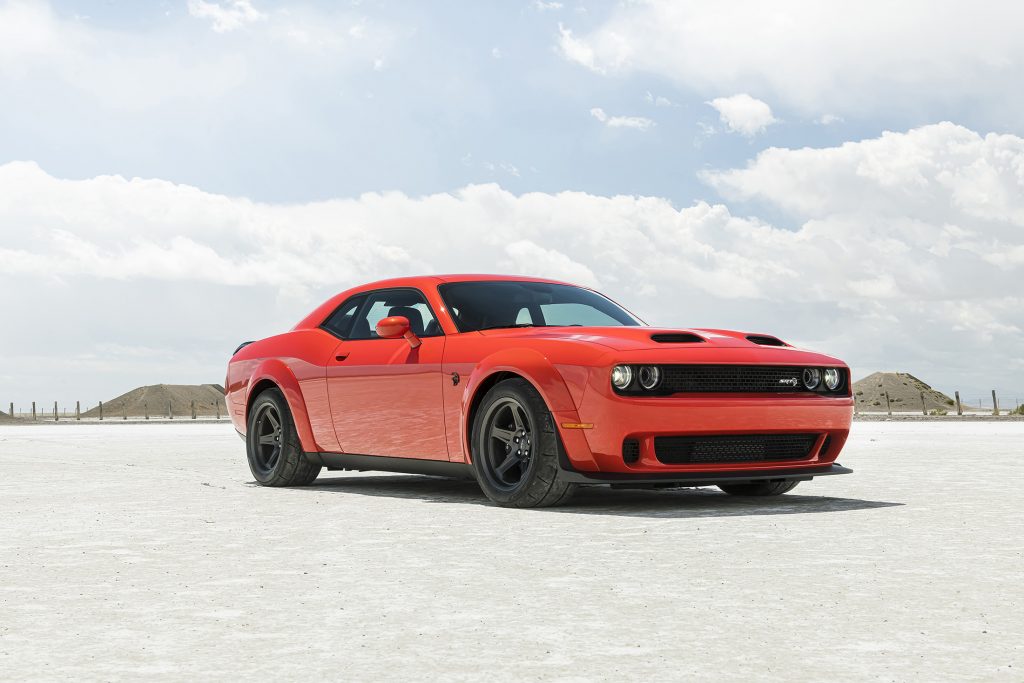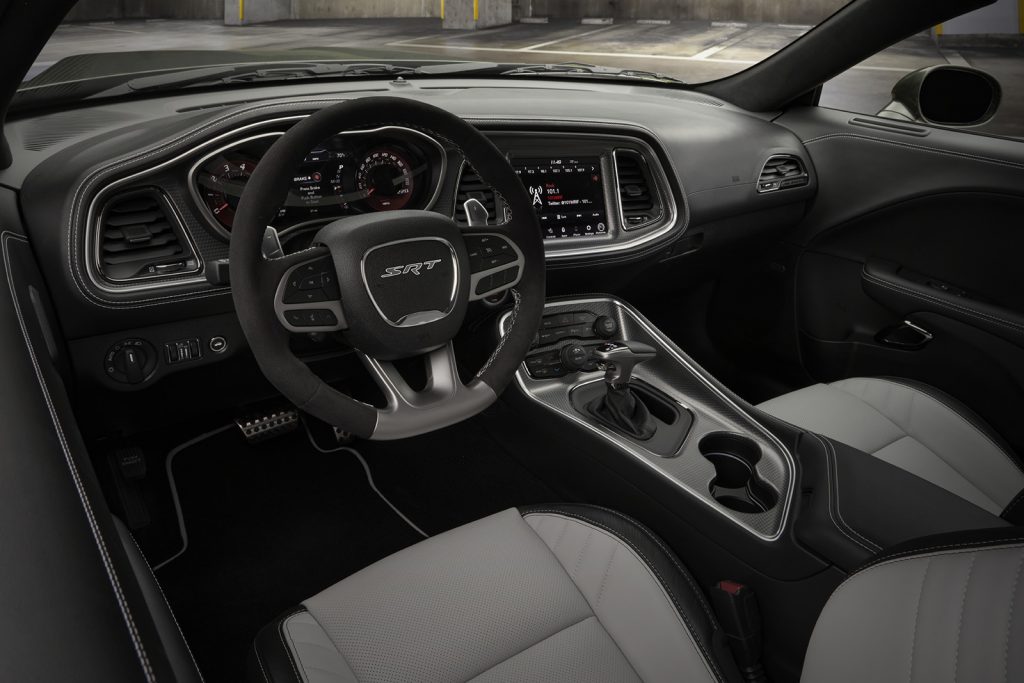Cargazing
By Derek Price
The Dodge Challenger Hellcat has always traded on nostalgia.
Its retro-themed bodywork, pre-fuel-embargo gas mileage and rip-roaring, American V8 engine are as close to a 1970s dream car as anything for sale today.
It’s feeling a bit poignant, though, as the contemporary world moves ever further from the Challenger’s hydrocarbon-burning roots.
I can’t think of a vehicle more emblematic of internal combustion engines than this one, a 717-horsepower monument to burning gasoline. Pressing the gas pedal to the floor is a religious experience — something that can only be done with a feathered touch, when the Challenger is pointed in a perfectly straight line, and even then with some trepidation.

The Dodge Challenger Hellcat looks and sounds as if it could have come from the 1970s. Its 6.2-liter supercharged V8 makes 717 horsepower.
This is a monster of a car, for sure, with a curb weight over 4,400 pounds and a length of just under 200 inches, roughly the same as a minivan. With an engine hat feels as if it could power a Navy aircraft carrier, though, it’s still one of the fastest cars on Planet Earth.
It’s as intimidating as any car I’ve driven, particularly on the track. Even with tires as wide as a Volkswagen, it still seems to struggle for grip at 25-percent throttle and punishes hamfisted drivers like me every chance it gets.
Those few brief moments you get with a Hellcat engine at full throttle, though, will stay with you the rest of your life. The sensations are that good.
Why am I feeling poignant, then?
It’s because cars like this have reached the end of their road.
Between buyers moving into crossovers en masse, the enactment of stricter government regulations and today’s pro-electric zeitgeist, gas guzzlers are doomed.

The Challenger Hellcat has an impressively roomy interior, especially for a coupe. The throwback styling carries into the cabin.
And it won’t just be the short list of crazy vehicles with the Hellcat engine dying off, either. Anything deemed ridiculous, wasteful, irresponsible or socially inappropriate will be banned from public roads.
It’s automotive cancel culture, and it will be here before we know it.
Tellingly, my drive in the Challenger Hellcat was sandwiched between two electric cars I’m testing: the Nissan Leaf and Kia EV6. Going from an EV into the king of gas burners, then back to another EV, is intense whiplash.
Just like with people, I think there should be room in the world for all kinds of different cars. I’m as enamored with a Challenger Hellcat as I am with battery-powered vehicles, and I hope for a long stretch of time when buyers can shop for both and pick the one they want.
The Challenger Hellcat starts at $68,320, which is more than twice the price of a base Challenger but also a screaming bargain for 717 horsepower.
If that’s not insane enough, Dodge offers a couple of extra-crazy choices this year. The Redeye ($76,925) makes 797 horsepower, while the Super Stock ($86,230) makes 807.
At A Glance
What was tested? 2022 Dodge Challenger SRT Hellcat Widebody ($63,530). Options: Paint upgrade ($95), wide body package ($6,000), Plus package ($2,095), SRT Black package ($695), carbon and suede interior ($1,595), alcantra appearance package ($1,795), driver convenience group ($1,295), Harman Kardon audio package ($1,995), automatic transmission ($2,995), summer tires ($695), 8.4-inch Uconnect system ($995), black brake calipers ($595). Price as tested (including $1,595 destination charge and $2,100 gas guzzler tax): $88,070
Wheelbase: 116 in.
Length: 197.5 in.
Width: 85.4 in.
Height: 57.5 in.
Engine: 6.2-liter supercharged V8 (717 hp, 656 lbs.-ft.)
EPA mileage: 13 city, 21 highway
RATINGS
Style: 9
Performance: 10
Price: 10
Handling: 7
Ride: 8
Comfort: 7
Quality: 7
Overall: 10
Why buy it?
It’s a nostalgic salute to American power. It’s one of the most exciting cars for sale today and a sheer bargain in terms of horsepower per dollar.
